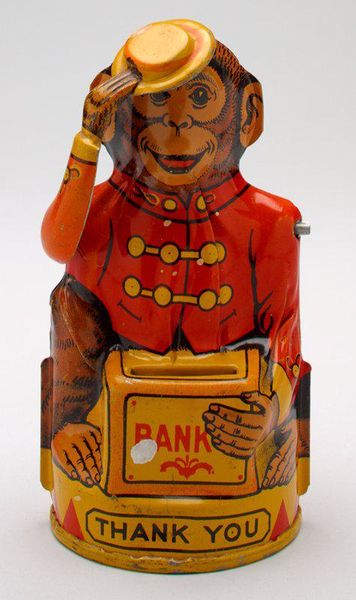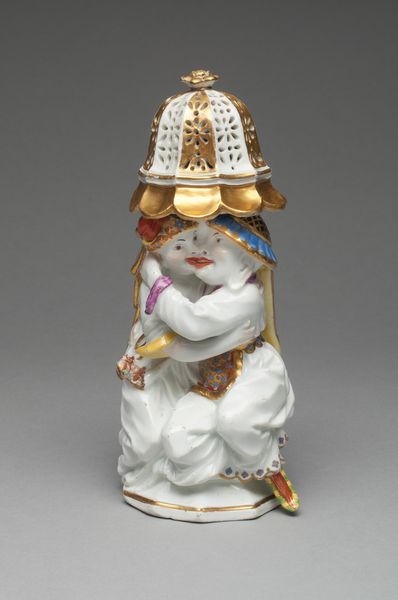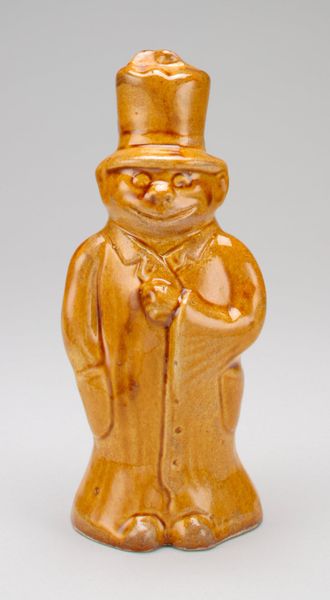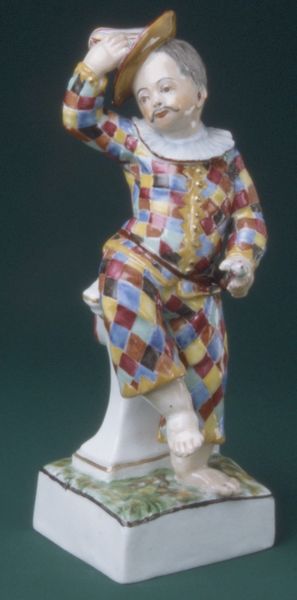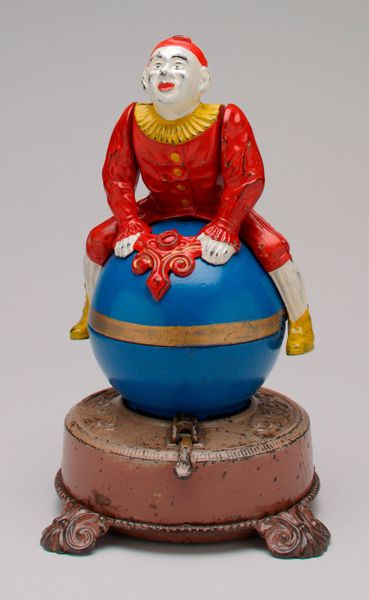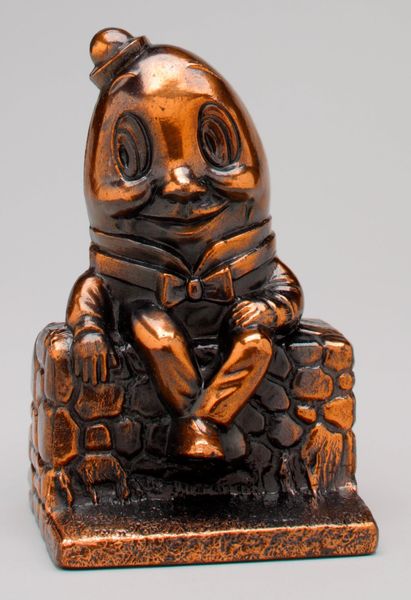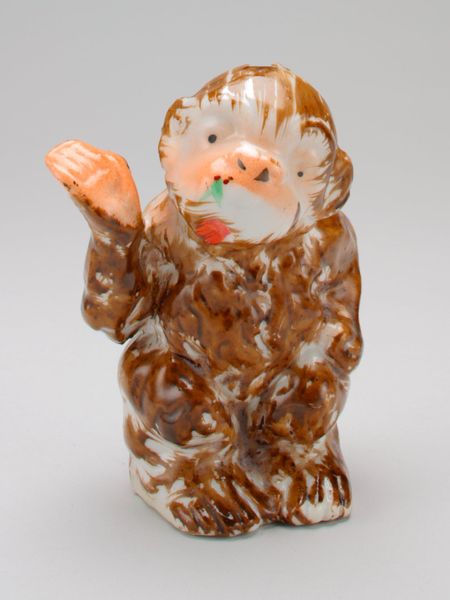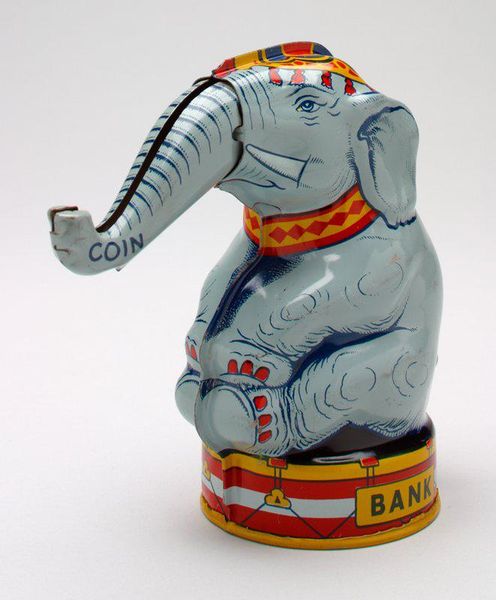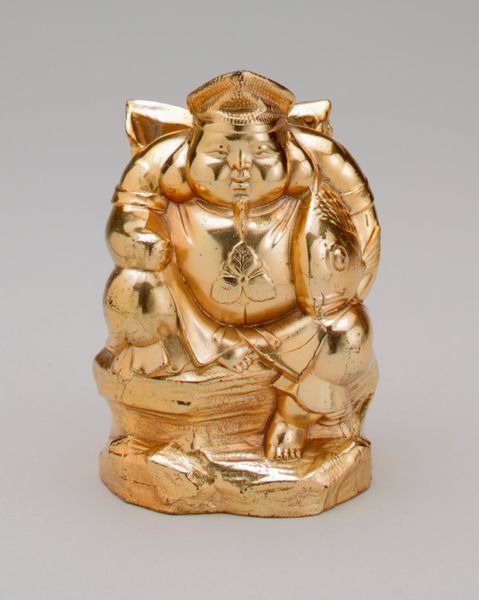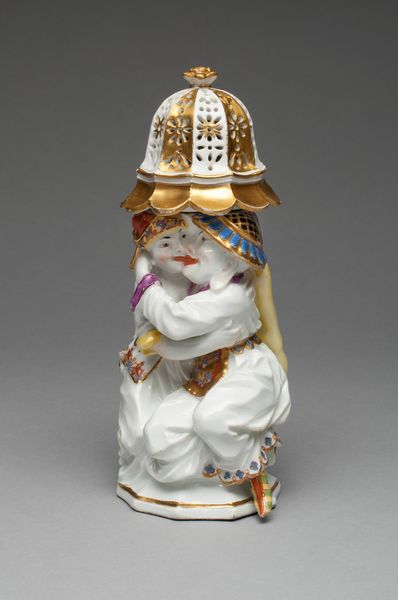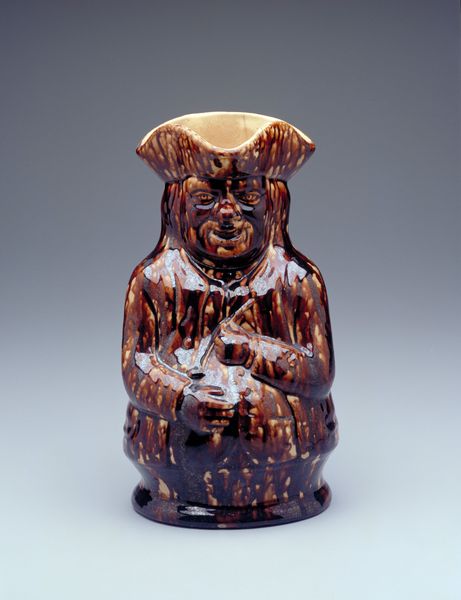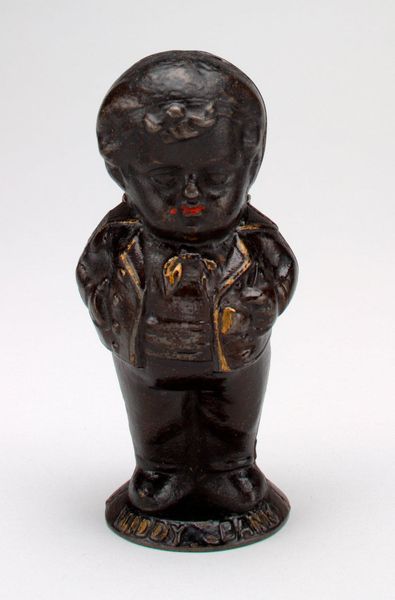
assemblage, metal
#
assemblage
#
metal
#
figuration
#
folk-art
Dimensions: 5 x 2 9/16 x 2 9/16 in. (12.7 x 6.51 x 6.51 cm)
Copyright: No Known Copyright
Editor: Here we have "Uncle Wiggley" mechanical bank, made by J. Chein & Company around 1949. It's an assemblage primarily of metal. It's got this really playful, folk-arty feel to it. How do you see this piece? Curator: Well, it's impossible to ignore the industrial production of this piece. Think about it: stamped metal, mass-produced components, lithographed designs meant to mimic hand-painting but ultimately emphasizing their manufactured nature. How does the commodification of childhood impact this so-called "folk-art"? Editor: That's an interesting point. I hadn't considered the factory-made aspect so much. So, the metal, the repetitive imagery, it's all about the mechanics of making a children's toy? Curator: Precisely! It's also a bank. It invites reflection on labor, value, and consumption. It represents both childhood innocence and its manipulation. This tension challenges traditional notions of craft versus high art. Do you agree? Editor: Absolutely. It's a bank, yes, meant for kids to use. However, the very nature of this object suggests underlying labor practices. In short, children were invited to participate in the capitalist system since the early years, perhaps unconsciously. This goes far beyond just cute folk-art, right? Curator: Precisely. Understanding the means of production allows us to dissect its ideological impact. It serves both as a collectible for us to admire today, while functioning as a tool for introducing early financial behavior in children. Editor: I will certainly not look at mechanical banks the same way again. I now see a connection between material processes and historical contexts! Curator: Excellent. Recognizing that relationship opens new doors.
Comments
No comments
Be the first to comment and join the conversation on the ultimate creative platform.
